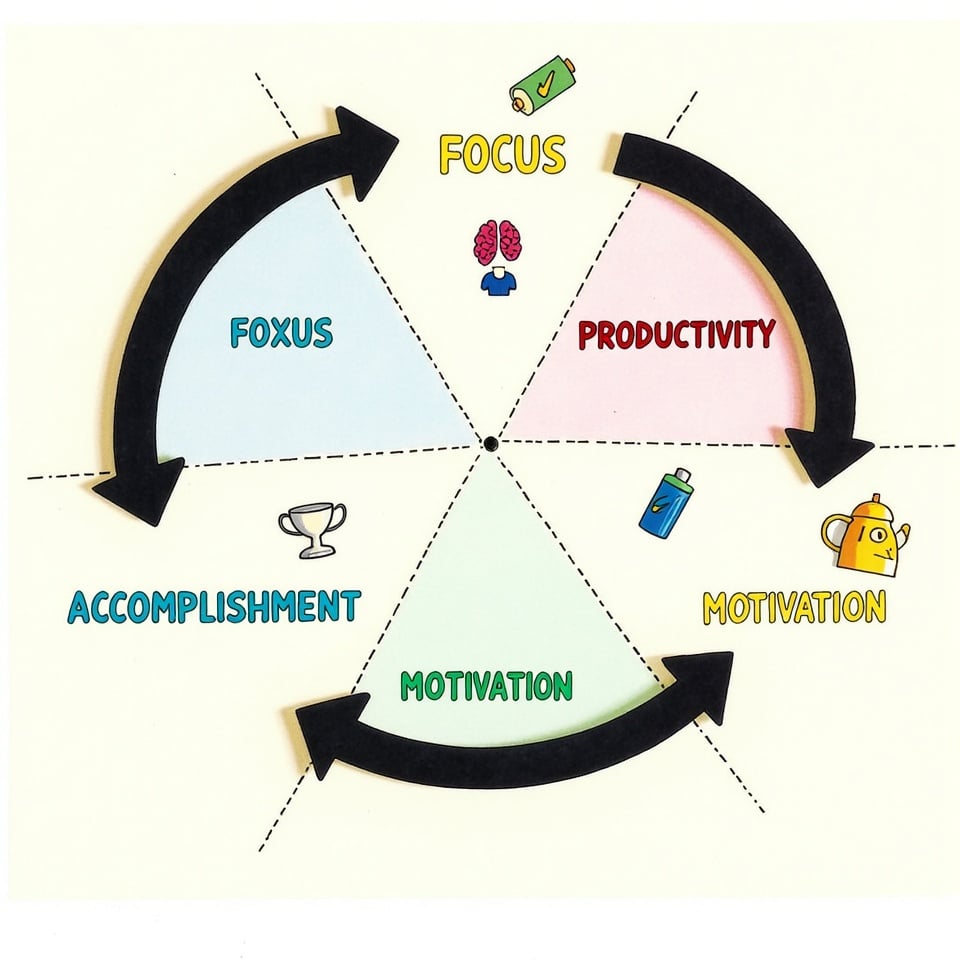A topic sentence is a sentence that clearly states the main idea of a paragraph or section of writing. It’s the sentence that tells readers what the rest of the paragraph is about, setting the stage for the supporting details and examples that follow.
Think of it as the headline of your paragraph—it grabs the reader’s attention and helps them understand the key point you’re trying to make.
In this article, I’ll break down what makes a good topic sentence, how to write one, and why it’s essential for effective communication.
Table of Contents
What is a Topic Sentence?
A topic sentence is a clear and concise statement that summarizes the main idea of a paragraph or section of writing. It’s typically the first sentence of a paragraph and serves as a guide for the reader, helping them understand what to expect from the rest of the text.
Why is a Topic Sentence Important?
A well-crafted topic sentence is crucial for effective communication. It:
- Helps readers quickly grasp the main idea of the text
- Sets the tone for the rest of the paragraph or section
- Provides a clear direction for the supporting details and examples
- Enhances the overall clarity and coherence of the writing
- Keeps readers engaged and interested in the content
In short, a topic sentence acts as a roadmap, guiding readers through the text and ensuring they stay on track with the author’s intended message.
Purpose of a Topic Sentence
A topic sentence serves as the foundation of a paragraph or essay, playing a crucial role in setting the tone and direction for the rest of the text. Its primary purpose is to:
- Introduce the main idea: A topic sentence clearly states the central argument, claim, or point of the paragraph or essay, giving readers a sense of what to expect.
- Establish the tone: The tone of the topic sentence influences the tone of the entire paragraph or essay, helping to create a specific atmosphere or mood.
- Provide direction: A well-crafted topic sentence guides the reader through the text, indicating what supporting details and examples will follow.
- Create a framework: A topic sentence acts as a framework for the rest of the paragraph or essay, helping to organize ideas and ensure a logical flow of information.
By setting the tone and direction, a topic sentence helps readers:
- Understand the author’s perspective and point of view
- Anticipate the main arguments or claims
- Follow the author’s line of reasoning
- Stay engaged and interested in the content
A strong topic sentence is essential for effective writing, as it helps to create a clear, concise, and compelling narrative that resonates with readers.
Types of Topic Sentences
Effective topic sentences come in various forms, each serving a unique purpose in engaging readers and conveying the main idea. Here are six common types of topic sentences, along with examples:
1. Simple Statements
Simple statements are the most common type of topic sentence. They clearly and concisely state the main idea, without any embellishments or complexities.
For example:
“The benefits of regular exercise include improved physical health and mental well-being.”
This topic sentence is straightforward and easy to understand, setting the stage for a paragraph that explores the advantages of regular physical activity.
2. Commands
Commands are topic sentences that instruct or direct the reader to take a specific action or adopt a particular perspective. They’re often used in persuasive or instructional writing.
For example:
“Take a few minutes each day to practice deep breathing exercises and reduce stress.”
This topic sentence is direct and action-oriented, encouraging readers to incorporate deep breathing exercises into their daily routine.
3. Questions (Interrogative)
Questions are topic sentences that encourage readers to think critically and engage with the material. They’re often used in essays that explore complex issues or ideas.
For example:
“What are the long-term consequences of climate change, and how can we work together to mitigate its effects?”
This topic sentence is thought-provoking and engaging, inviting readers to consider the implications of climate change and potential solutions.
4. Complex Sentences
Complex sentences are topic sentences that combine multiple ideas or clauses to create a richer and more nuanced understanding of the main idea.
For example:
“While some argue that standardized testing is necessary for evaluating student performance, others claim that it stifles creativity and critical thinking.”
This topic sentence combines two opposing viewpoints, setting the stage for a paragraph that explores the pros and cons of standardized testing.
5. Transitional Sentences
Transitional sentences are topic sentences that connect ideas between paragraphs or sections, creating a smooth flow of information.
For example:
“Having discussed the benefits of meditation, let’s now explore some practical tips for incorporating it into your daily routine.”
This topic sentence connects the previous discussion on the benefits of meditation to the next section, which provides practical advice for readers.
6. Pivot Sentences
Pivot sentences are topic sentences that shift the focus or direction of the essay, often introducing a new idea or perspective.
For example:
“While we’ve been discussing the individual benefits of recycling, it’s also important to consider the broader environmental implications of our actions.”
This topic sentence pivots from a discussion on individual benefits to a broader exploration of environmental implications, adding depth and complexity to the essay.
Topic Sentence Examples
Here are some topic sentence examples in different contexts:
Argumentative Essay
- “The use of plastic bags should be banned in all supermarkets to reduce pollution and protect the environment.”
- “Standardized testing is not an effective measure of student intelligence and should be abolished in schools.”
Analytical Essay
- “In F. Scott Fitzgerald’s The Great Gatsby, the green light symbolizes the elusive American Dream and the corrupting influence of wealth.”
- “The character of Holden Caulfield in J.D. Salinger’s The Catcher in the Rye is a classic example of adolescent angst and rebellion.”
Comparative Essay
- “While both the iPhone and Samsung Galaxy have their strengths and weaknesses, the iPhone is ultimately the better choice for those who value ease of use and security.”
- “The novels of Jane Austen and the Brontë sisters share many similarities in their portrayal of women’s roles in society, but they also have some notable differences.”
Descriptive Essay
- “The city of Paris is a place of breathtaking beauty, with its stunning architecture, charming streets, and vibrant cultural scene.”
- “The Grand Canyon is one of the most awe-inspiring natural wonders of the world, with its vast expanse of rugged terrain and majestic vistas.”
Narrative Essay
- “My first day of college was a nerve-wracking experience, but it ultimately turned out to be a transformative moment in my life.”
- “The summer I spent traveling through Europe was a journey of self-discovery and growth, one that I will always treasure.”
Persuasive Essay
- “We should all make a conscious effort to reduce our carbon footprint and live more sustainably to protect the planet for future generations.”
- “The benefits of regular exercise far outweigh the costs, and we should all strive to make physical activity a part of our daily routine.”
These are just a few examples of topic sentences in different contexts. Remember that a good topic sentence should be clear, concise, and engaging, and should set the tone for the rest of the essay.
How to Write a Topic Sentence
Writing a topic sentence is a crucial step in crafting a well-structured and effective essay.
Here’s a step-by-step guide to help you write a good topic sentence:
Step 1: Develop a Clear Thesis Statement
A clear thesis statement is the foundation for your topic sentences. It sets the tone and direction for your entire essay, providing a roadmap for your readers to follow. A well-crafted thesis statement should be concise, specific, and arguable.
If you’re struggling to come up with a thesis statement, don’t worry! You can use our free thesis statement generator, which uses AI to generate compelling and clear thesis statements. This tool can help you get started and provide inspiration for your own thesis statement.
A good thesis statement should:
- Clearly state the main argument or claim
- Provide a roadmap for the rest of the essay
- Be concise and specific
- Be arguable and open to debate
For example, a clear thesis statement might look like this:
“The benefits of regular exercise, including improved physical health and mental well-being, make it an essential part of a healthy lifestyle.”
With a clear thesis statement in hand, you’ll be well on your way to crafting effective topic sentences that support your main argument.
Step 2: Create an Essay Outline and Draft Topic Sentences
With a clear thesis statement in hand, it’s time to organize your ideas and craft topic sentences that align with your main argument. This is where an essay outline comes in handy.
An essay outline is a roadmap that helps you structure your ideas and ensure that your essay flows logically. It’s a crucial step in the writing process, as it helps you to:
- Organize your ideas and thoughts
- Ensure that your essay has a clear structure and flow
- Develop a clear and concise writing style
If you’re struggling to come up with an essay outline, don’t worry! Blainy’s free essay outline generator can help. It uses AI to generate excellent essay outlines that are tailored to your specific needs.
With your essay outline in hand, it’s time to start drafting topic sentences.
A good topic sentence should:
- Clearly state the main idea of the paragraph
- Provide evidence to support your thesis statement
- Be concise and specific
If you’re struggling to come up with topic sentences, Blainy’s free topic sentence generator can help.
By using Blainy’s free essay outline generator and topic sentence generator, you can streamline your writing process and ensure that your essay is well-structured and effective. These tools can help you to:
- Save time and effort
- Improve the quality of your writing
- Ensure that your essay is well-organized and easy to follow
With Blainy’s tools, you can focus on what matters most – developing your ideas and crafting a compelling argument.
Step 3: Expand with Evidence
Now that you have a clear topic sentence, it’s time to support it with relevant examples and data. This is where you provide evidence to back up your claim and make your argument more convincing.
Evidence is essential in academic writing because it helps to:
- Build credibility and trust with your readers
- Support your argument and make it more convincing
- Demonstrate your understanding of the topic and your ability to think critically
There are many types of evidence you can use to support your topic sentence, including:
- Statistics and data
- Research findings
- Expert opinions
- Real-life examples
- Historical events
To find relevant research articles to support your topic sentence, you can follow the steps outlined in our article on how to find relevant research articles. This will help you to locate credible sources and ensure that your evidence is up-to-date and relevant.
When incorporating evidence into your writing, make sure to:
- Use clear and concise language
- Provide context and explain the significance of the evidence
- Use proper citation and referencing to credit the original source
- Use evidence to support your argument, rather than simply presenting it as fact
Step 4: Refine and Improve Your Topic Sentences
Now that you have a solid draft of your topic sentences, it’s time to refine and improve them. This step is crucial in ensuring that your topic sentences are clear, concise, and impactful.
When revising your topic sentences, ask yourself:
- Is the sentence clear and easy to understand?
- Is the language concise and free of jargon?
- Does the sentence effectively convey the main idea of the paragraph?
When editing your topic sentences, look for ways to:
- Simplify complex sentences
- Eliminate unnecessary words and phrases
- Use active voice instead of passive voice
Grammatical errors can undermine the credibility of your writing and distract from your message. To ensure that your topic sentences are error-free, you can use Blainy’s free grammar checker. This tool can help you identify and correct grammatical mistakes, such as subject-verb agreement errors, tense inconsistencies, and punctuation errors.
Grammar is essential in academic writing because it helps to establish credibility and trust with your readers.
Finally, refine your topic sentences to make them more impactful.
Ask yourself:
- Does the sentence grab the reader’s attention?
- Does the sentence effectively convey the main idea of the paragraph?
- Does the sentence leave a lasting impression on the reader?
Topic Sentence vs Thesis Statement
While both topic sentences and thesis statements play crucial roles in academic writing, they serve distinct purposes.
A thesis statement is a broad, overarching argument that guides the entire essay, whereas a topic sentence is a specific, focused statement that supports the thesis by introducing a particular idea or claim.
In other words, the thesis statement provides the overall direction, and the topic sentence provides the specific route to get there.
| Thesis Statement | Topic Sentence | |
|---|---|---|
| Definition | A broad, overarching argument that guides the entire essay | A specific, focused statement that supports the thesis by introducing a particular idea or claim |
| Purpose | Provides the overall direction of the essay | Supports the thesis by introducing a specific idea or claim |
| Scope | Entire essay | Single paragraph or section |
| Example | “Climate change is a pressing global issue that requires immediate attention.” | “Rising sea levels are a significant consequence of climate change, threatening coastal communities worldwide.” |
Advanced Techniques for Topic Sentences
Once you’ve mastered the basics of topic sentences, it’s time to take your writing to the next level with advanced techniques. These strategies will help you to create a cohesive and engaging narrative that flows smoothly from one idea to the next.
Using Topic Sentences as Transitions
Topic sentences can be used to connect ideas between paragraphs or sections, creating a seamless transition from one idea to the next.
This technique helps to:
- Link related ideas together
- Show the relationship between different ideas
- Create a cohesive and logical flow of ideas
To use topic sentences as transitions, try using words or phrases like “however,” “in addition,” or “meanwhile” to connect your ideas.
Introducing Multiple Paragraphs with a Single Topic Sentence
In some cases, you may want to use a single topic sentence to introduce multiple ideas or paragraphs.
This technique is useful when:
- You want to provide an overview of a complex topic
- You need to introduce multiple related ideas
- You want to create a sense of continuity between paragraphs
To use a single topic sentence to introduce multiple paragraphs, try using a broad or general statement that encompasses multiple ideas. Then, use subsequent paragraphs to elaborate on each idea.
Emphasizing, Expanding, Summarizing, and Anticipating
Topic sentences can be used to create a cohesive and engaging narrative by:
- Emphasizing key points or ideas
- Expanding on previous ideas or introducing new ones
- Summarizing complex information or main points
- Anticipating counterarguments or future developments
To make these techniques easier, you can use Blainy’s free paragraph expander and summarizer tools.
These tools can help you to:
- Expand on your ideas and create more detailed paragraphs
- Summarize complex information and main points
- Create a cohesive and engaging narrative
Wrapping it up
With a solid understanding of topic sentences, you’re now equipped to take your writing to the next level. By crafting clear, concise, and impactful topic sentences, you’ll be able to guide your readers through your writing with ease and confidence.
A good topic sentence is the foundation of a well-written paragraph, and with practice, you’ll be able to create effective topic sentences that engage and inform your audience.
If you need help getting started, try using Blainy’s free Topic Sentence Generator to easily write good topic sentences.
Happy writing!
FAQs
What is a topic sentence?
A topic sentence is a clear and concise statement that introduces the main idea of a paragraph or section, guiding the reader through the rest of the content.
How to write a topic sentence?
To write a topic sentence, identify the main idea of your paragraph, and craft a sentence that clearly and concisely expresses that idea, using simple language and avoiding unnecessary details.
How long should a topic sentence be?
A topic sentence should be brief, typically no more than 1-2 sentences, and ideally around 10-15 words in length.
How do I start a topic sentence?
Start a topic sentence with a clear and concise phrase that introduces the main idea, using words like “however,” “in addition,” or “meanwhile” to connect to the previous idea.
What words can you use for a topic sentence?
Use transition words like “however,” “in addition,” “meanwhile,” and phrases like “one way to,” “another reason is,” or “for example” to start a topic sentence and connect to the previous idea.







